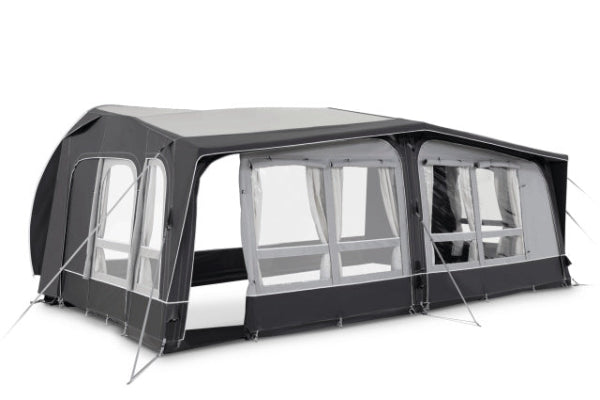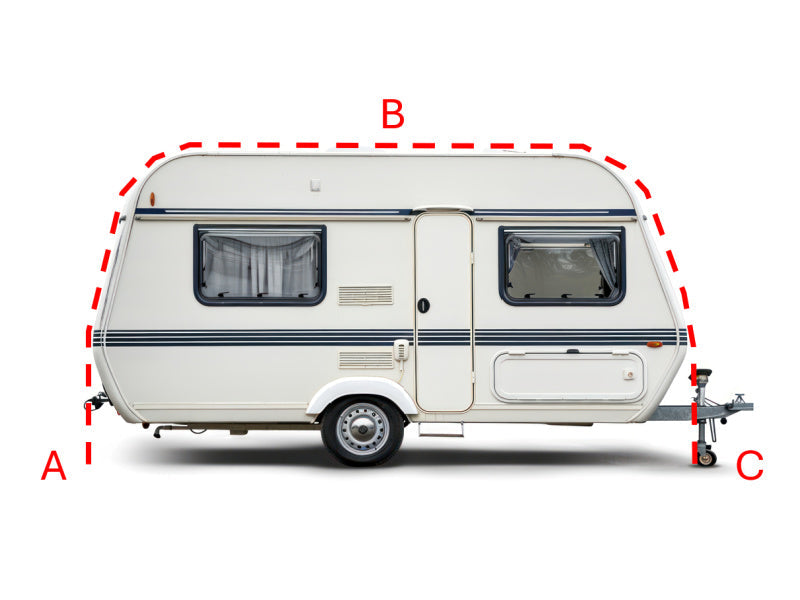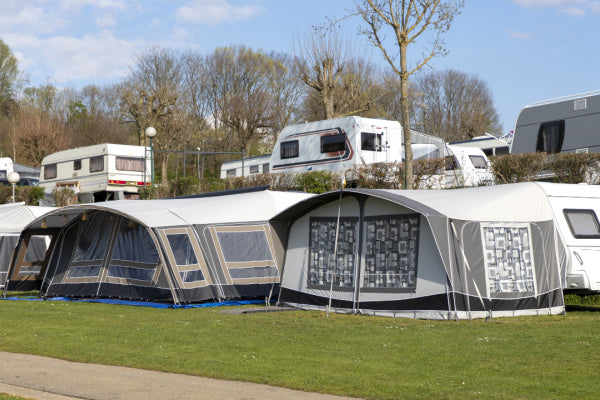Is Your Portable Power Station Fully Charged? Here's How to Tell
Not sure if your Portable Power Station is full or just faking it? Quick answer: check the battery percentage, LED lights, or app alerts. Still blinking? Stick around—we’ll break down charge clues, beep signals, and battery-saving tips to keep your power buddy juiced and drama-free.
Understanding Your Power Station's Display Indicators
If you want to get the best out of your power station, it helps to understand how it shows charge levels.
Some units make this super clear with digital screens. Others keep it simple with LED lights.
Let’s unpack the different types and what they mean.

LCD Screens and Digital Displays
Many modern power stations come with LCD screens that offer detailed information about charging.
These screens often display battery percentage, input/output data, and time remaining.
Battery Percentage: How to read the 0–100% display
Battery percentage is the most straightforward method. When your display reads “100%,” you’re at full charge.
Full Charge Icon/Text: Look for “FULL,” “100%,” or a specific icon
In some models, the screen may flash “FULL” or show an icon—usually a solid battery symbol—when it’s done charging.
Input/Output Wattage: How this changes as charging completes (input drops to zero or near zero)
Another clue is the input wattage. When your power station is full, the input often drops to 0W or close.
This suggests that the charger has stopped pulling power.
Estimated Charge Time: How this countdown display indicates completion
Some units also have a countdown timer. If it’s hit zero or disappears, you’re likely done.
LED Light Indicators
Simpler models don’t have screens but still manage to communicate charge levels effectively.
They rely on LED lights that change colour or pattern as the battery fills up.
Solid vs. Flashing Lights: Common patterns for charging vs. fully charged (e.g., solid green for full)
While charging, the LEDs may blink. Once full, they typically go solid—often green.
This gives a quick visual confirmation without needing to read numbers.
Colour Changes: Red, yellow, green indicators and their meanings
Each colour often represents a range:
-
Red: low charge
-
Yellow: mid-level
-
Green: full battery
Refer to your manual for specifics.
Mobile Apps and Connectivity
Many newer power stations pair with apps for easier monitoring.
This is especially handy if you’re charging it somewhere else in the house or while out and about.
Remote Monitoring: How apps display charge status and notifications
Apps often show charge percentage, input/output power, and battery health.
You’ll usually get a pop-up when the battery hits 100%.
Customisation and Alerts: Setting up alerts for full charge
Some apps let you set custom alerts.
That way, you don’t have to keep checking the screen to know when charging’s finished.
Common Charging Methods and Their Full Charge Cues
Your power station’s behaviour can vary depending on how you’re charging it.
Here’s what to expect with different methods.
AC Wall Outlet Charging
Standard Indicators: Reiterating LCD/LED cues for wall charging
Wall charging is the most direct and reliable. You’ll usually see the clearest indicators here—either on-screen or via LEDs.
Unplugging Recommendations: When to disconnect after full charge
Once the station is full, unplug it if possible. Even with overcharge protection, it’s better for long-term battery health.
Solar Panel Charging
Monitoring Solar Input: How to see if panels are still actively charging
Look at the input wattage. If it drops to zero under full sunlight, charging is likely complete.

Impact of Sunlight: Explaining how sunlight intensity affects charging and knowing when it’s topped off for the day
If clouds pass or the sun dips, charging can pause or slow.
Once full sun returns and input still stays low or flatlines, it’s probably full.
Car Charger (12V DC)
Slower Charging Nature: Acknowledging that it takes longer and full charge might not always be the primary goal for this method
Charging via car is much slower. Often it’s used just to give the battery a boost—not a full recharge.
Engine On/Off Considerations: Emphasising charging while the engine is running
Always keep the engine on during charging.
Otherwise, you could risk draining your vehicle’s battery.
What Happens When a Portable Power Station is Fully Charged?
Understanding what happens at full charge helps protect the device and gives peace of mind.
Automatic Shut-off/Trickle Charge: Explaining internal mechanisms to prevent overcharging
Most power stations will either stop charging or switch to a trickle charge mode once full.
This helps avoid battery stress.
Battery Management System (BMS): Briefly mention its role in protecting the battery
The built-in Battery Management System handles these transitions and safeguards the battery’s health over time.

Fan Noise Reduction: How fans might quiet down as charging completes
If your unit has cooling fans, they may power down or run quieter once charging finishes.
It’s another quiet clue that the process is done.
Optimising Charging and Battery Lifespan
If you want your power station to last, knowing what affects charge time and battery health is key.
Factors Affecting Charging Time and Lifespan
Battery Capacity (Wh): Larger capacity means longer charge time
A 1000Wh battery takes longer to charge than a 300Wh unit—especially with the same charger.
Input Wattage: Higher wattage chargers mean faster charging
A 200W input will charge faster than a 60W one. Use the maximum supported input when you can.
Battery Type (LiFePO₄ vs. Lithium-ion): Different types have different charging characteristics and lifespans
LiFePO₄ batteries tend to last longer but charge more slowly. Lithium-ion is quicker but ages faster.
Temperature: How extreme temperatures affect charging efficiency and battery health
Charge in mild temperatures. Too hot or cold can slow charging or harm the battery.
Initial Battery Level: Charging from 0% takes longer
Obvious but important—charging from zero always takes more time.
Best Practices for Charging and Storage
Avoid Deep Discharges (0%): Recommendations for partial discharges (e.g., 20–80%)
Try to avoid letting the battery drop to 0%. Staying between 20% and 80% is ideal.
Avoid Overcharging (Though Modern Systems Protect): Reassure users but still advise against leaving it plugged in indefinitely
Most systems stop charging once full, but it’s still smart to unplug it when you can.
Proper Storage Temperature: Keeping the power station in a cool, dry place
Avoid extreme heat or humidity. Store the unit somewhere dry and around room temperature.
Regular Recharging (for Storage): Maintaining a partial charge (e.g., 50–80%) for long-term storage
If storing long-term, keep it charged to around 50–80%, and top it up every couple of months.
Using Compatible Chargers and Cables: Emphasising manufacturer recommendations
Stick to official or compatible chargers and leads to avoid damaging the battery or slowing charge times.
Troubleshooting: When Your Power Station Isn't Showing Full Charge
If it seems stuck below 100%, here are some common culprits to rule out.
Checking Connections: Loose cables, damaged ports
Inspect all plugs and ports. A poor connection can stop charging entirely.
Verifying Power Source: Ensuring the outlet or solar panel is providing power
Check that your wall outlet or solar panel is actually supplying power.
Try another outlet or a known-good panel.
Consulting the User Manual: The definitive guide for specific models
Each model has quirks. Your user manual will give specific info on symbols, error codes, or charge issues.
Contacting Manufacturer Support: When to seek professional help
If all else fails and your unit is still under warranty, contact the manufacturer for support or repairs.
Other content you might like:
- What Appliances Can You Use on a 1000W Inverter?
- What Is the Difference Between an Inverter and a Power Station?
- Can You Charge a Portable Power Station With a Solar Panel?
- Is 200W Solar Enough for Camping?
- Can I Plug My Motorhome Into a Portable Power Station?
- How to Operate a Portable Power Station?
- How Long Does a Portable Power Station Hold Its Charge?
- Can You Overcharge a Portable?
- Can I Use My Portable Power Station While Charging?





Leave a comment